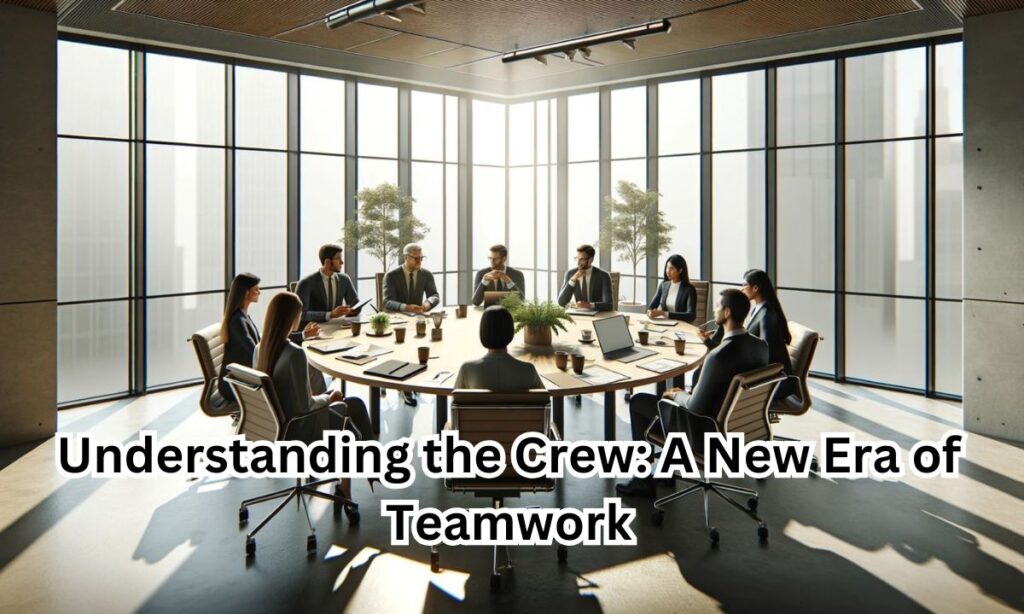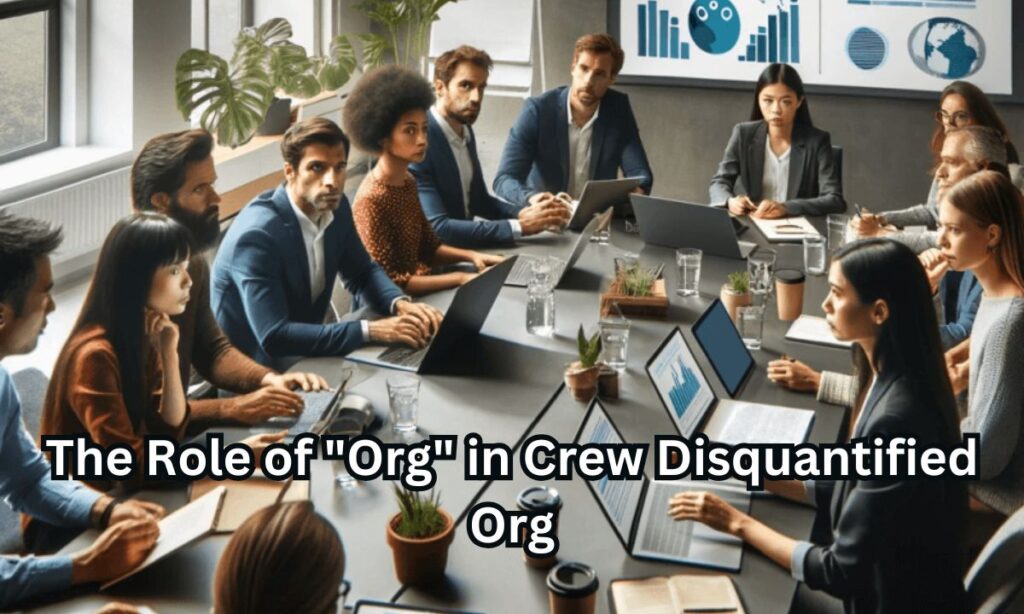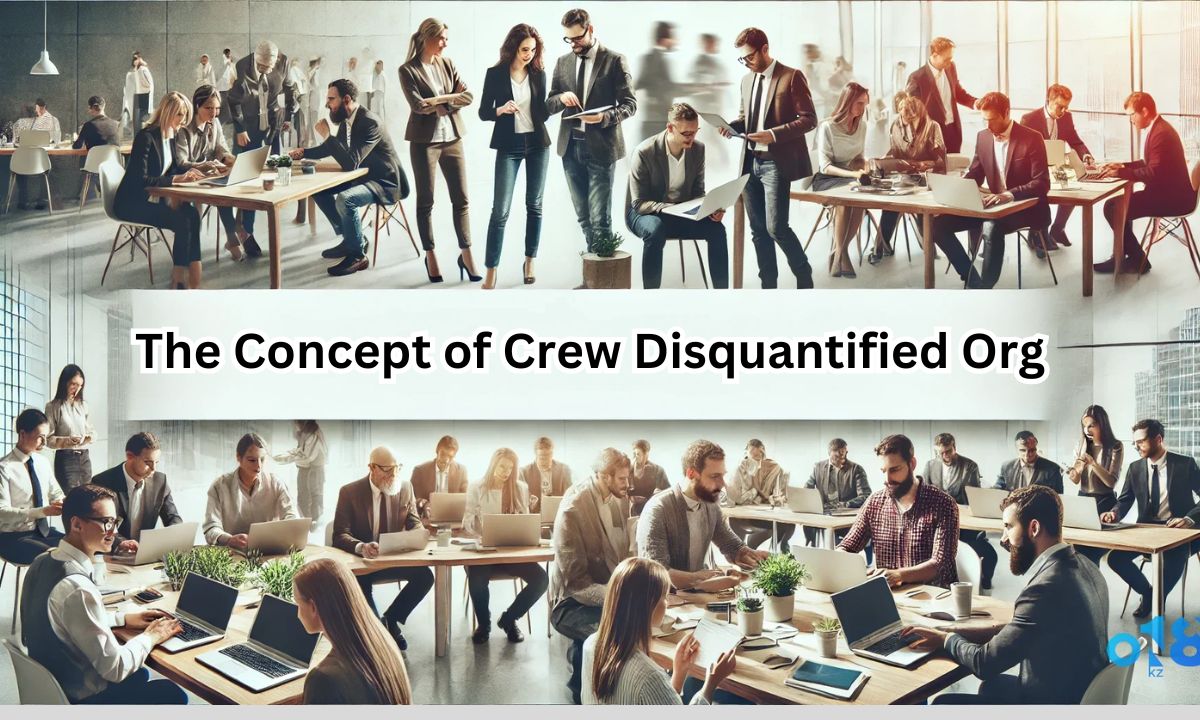The Crew Disquantified Org model revolutionizes traditional organizational structures by introducing a groundbreaking approach to team collaboration and workplace dynamics.
This innovative framework challenges conventional metrics-driven management, emphasizing human connections, qualitative achievements, and adaptive team structures in modern business environments.
By reimagining how teams work together and measure success, the Crew Disquantified Org concept offers organizations a pathway to enhanced innovation, employee engagement, and sustainable growth in today’s rapidly evolving business landscape.
Understanding the Crew: A New Era of Teamwork
The modern workforce requires a fundamental reimagining of collaboration and team dynamics. In the Crew Disquantified Org model, the term “crew” transcends traditional team definitions.

It encompasses a dynamic collective of individuals who share responsibilities and contribute unique perspectives to achieve common objectives.
Cross-functional collaboration forms the cornerstone of this new approach. Teams operate within fluid boundaries, sharing knowledge and resources across traditional departmental lines.
This interconnected system promotes innovation through diversity of thought and expertise. The emphasis on adaptive teamwork enables organizations to respond swiftly to market changes and emerging opportunities.
The concept of crew in this context embraces both formal and informal leadership structures. Team members naturally assume leadership roles based on their expertise and the specific needs of each project or initiative. This organic approach to leadership fosters greater engagement and promotes a sense of shared ownership in outcomes.
The Disqualified Concept: Moving Beyond Numbers
The disquantified approach represents a fundamental shift from traditional performance metrics. While quantitative measurements remain important, they no longer serve as the primary indicators of success.
Instead, organizations focus on qualitative achievements and human-centric values that drive sustainable growth and innovation.This transformation emphasizes the importance of emotional intelligence and interpersonal dynamics in the workplace.
Success is measured through indicators such as team cohesion, knowledge sharing, and personal development. The disquantified concept acknowledges that meaningful progress often occurs in areas that cannot be easily quantified through traditional metrics.
The approach also recognizes the value of storytelling and narrative in organizational development. Teams share experiences and insights through collaborative dialogue, creating a rich tapestry of organizational knowledge. This emphasis on qualitative communication helps build stronger relationships and more resilient teams.
READ THIS BLOG: Richard Goodall Bio, Age, Wife, Net Worth
The Role of “Org” in Crew Disquantified Org
The organizational aspect of the Crew Disqualified model emphasizes flexible structures and adaptive systems. Traditional hierarchies give way to networks of interconnected teams that can rapidly reconfigure based on changing needs and opportunities.

This fluidity enables faster decision-making and more effective resource allocation.Leadership evolution plays a crucial role in this new organizational paradigm. Leaders become facilitators and enablers rather than traditional managers.
They focus on creating environments where teams can thrive and innovation can flourish. This shift requires new leadership competencies centered around emotional intelligence and adaptive decision-making.
The organization itself becomes a living system, constantly evolving and adapting to internal and external changes. This organic approach to organizational structure promotes resilience and sustainability while maintaining alignment with core values and strategic objectives.
Benefits of a Crew Disquantified Org
| Benefit Category | Impact | Practical Outcomes |
| Employee Engagement | Higher motivation and commitment | Increased productivity, reduced turnover, better workplace satisfaction |
| Team Dynamics | Enhanced collaboration and trust | Faster problem-solving, improved innovation, stronger team relationships |
| Decision Making | Decentralized and agile responses | Quicker adaptation to changes, more informed choices, reduced bottlenecks |
| Innovation | Increased creativity and experimentation | New solutions, improved processes, competitive advantage |
| Organizational Culture | Stronger shared values and purpose | Better alignment, improved morale, enhanced employer brand |
| Knowledge Sharing | Improved cross-functional learning | Reduced silos, enhanced skill development, better resource utilization |
| Leadership Development | Emergent leadership opportunities | Natural talent progression, improved succession planning, diverse leadership styles |
| Workplace Flexibility | Adaptable work arrangements | Better work-life balance, increased resilience, improved talent attraction |
| Customer Focus | Enhanced responsiveness | Better customer satisfaction, improved service quality, stronger relationships |
| Operational Efficiency | Streamlined processes | Reduced bureaucracy, optimized resource allocation, faster implementation |
| Growth Potential | Sustainable organizational development | Long-term stability, scalable operations, market adaptability |
| Risk Management | Distributed responsibility | Better risk identification, faster problem resolution, increased accountability |
Crew Disquantified Org Challenges to Consider
| Category | Challenges | Description |
| Implementation Resistance | Resistance to Change | • Organizations stuck in traditional data-driven approaches • Difficulty moving away from quantitative metrics • Reluctance to adopt new methodologies |
| Measurement Issues | Ambiguity in Metrics | • Unclear methods for measuring qualitative success • Difficulty in defining non-numerical achievements • Challenge of tracking progress without traditional metrics |
| Team Alignment | Organizational Cohesion | • Need for all team members to understand and adopt the approach • Ensuring consistent application across departments • Managing different interpretations of qualitative goals |
| Communication | Clear Messaging | • Explaining abstract concepts to stakeholders • Maintaining clear communication channels • Translating qualitative achievements into reportable results |
| Cultural Shift | Mindset Change | • Moving from numbers-focused to story-focused evaluation • Changing established workplace cultures • Breaking away from traditional success metrics |
| Resource Management | Implementation Costs | • Time needed for transition • Training requirements • Potential productivity impacts during transition |
Frequently Asked Questions
How does the Crew Disquantified Org model impact productivity?
The model enhances productivity through increased engagement and more effective collaboration, though results may take time to materialize as teams adapt to new ways of working.
What role do traditional metrics play in a disqualified organization?
Traditional metrics serve as complementary indicators alongside qualitative measures, providing a balanced view of organizational performance and success.
How can organizations maintain accountability in a disqualified system?
Accountability shifts to focus on team outcomes and collective responsibility, supported by clear communication and shared expectations.
What type of leadership development is needed for this model?
Leaders need training in emotional intelligence, adaptive decision-making, and facilitative leadership to effectively support disqualified organizations.
How does this model affect career development and advancement?
Career progression becomes more fluid and multidimensional, based on demonstrated capabilities, collaborative success, and contribution to organizational goals.
Conclusion:
The Crew Disquantified Org model represents a transformative approach to organizational design and management.
By emphasizing human connections, adaptive structures, and qualitative achievements, this framework addresses the evolving needs of modern businesses while creating more engaging and sustainable workplaces.
The future demands organizations capable of rapid adaptation while maintaining strong human connections and shared purpose. The Crew Disquantified Org model provides a comprehensive framework for building such organizations. As businesses continue to evolve in an increasingly complex environment, this approach offers a pathway to success that balances efficiency with humanity, metrics with meaning, and structure with flexibility.

David is a seasoned SEO expert with a passion for content writing, keyword research, and web development. He combines technical expertise with creative strategies to deliver exceptional digital solutions.















